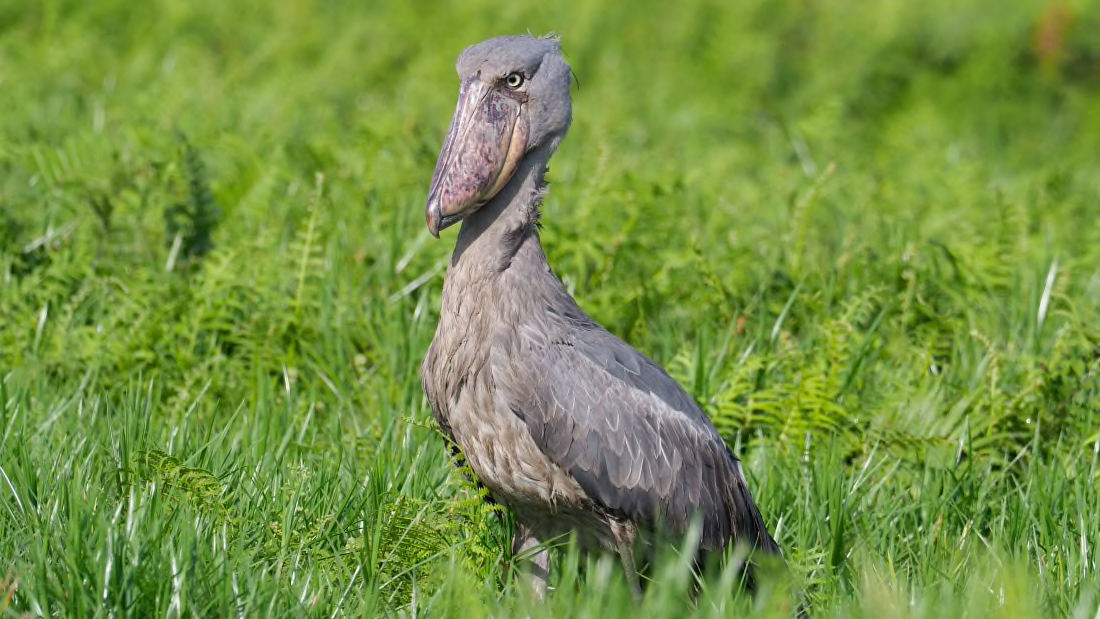

It is very rare to see two or more shoebill storks being next to each other.

Even when they are paired or have mated, they still hunt and eat alone and away from their partners. As for chicks, they make a hiccup-like sound that indicates they are hungry.ĪLSO READ: Fun Fact: Is This A Creepy Bird With Multiple Legs? Apparently Not!Īccording to Africa Freak, shoebill storks are very territorial, so they live in solitary. They clap their lower jaw and upper jaw together to produce a hollow sound. Shoebills are able to make this sound using a technique known as gular fluttering or the vibrating of the throat muscles to dissipate heat. Shoebill makes this loud bill-clattering display to attract a partner although it may sound scary to humans, it sounds attractive to these birds, especially during nesting season. It is very loud and scary that sounds like a hippopotamus calling. This "bill-clattering behavior" is also observed when they are greeting another bird. Shoebills are mostly silent as they wait for their prey, but they produce a strange sound that is not common among birds.ĭuring nesting, the adult shoebill makes awesome machine gun noises, Africa Freak reported. According to Soothing Nature, this fishing technique is called "collapsing," wherein it involves lunging or falling forward to their prey.īut that is not the only amazing thing about them. By the time a lungfish comes up for air, it would be already too late to notice this lethal prehistoric-looking bird. A number of things are threatening the species including its increased popularity in the pet trade, hunting, and the usual habitat loss and nest destruction.Shoebill can stay motionless for many hours so that it will not get noticed by its prey.

Its status comes from the fact that less than 8,000 in population have been counted. The Shoebill Stork is listed as a vulnerable species. To maintain balance of its oddly proportioned body, the Shoebill Stork will spread its wings behind him for stability when going for the kill. This is because it forces the wildlife and fish living in the water to come up for air and easily fall prey to the Shoebill. You can observe the bird on top of floating vegetation on waters that are poorly oxygenated (swampy, immobile water). The Shoebill Stork uses its large bill to probe the mud around him in search of these food sources.

This big stork feeds off frogs, small crocodiles, and fish, mainly Lungfish. During nesting the bird will clap its break together, and its young can make sounds like 'hiccups' to alert the mature storks they are hungry. As previously mentioned, the Stork is quiet most of the time but does make noises to communicate with each other. The young birds will not take their first steps for the first two and a half months! They are born brown and by maturity will be bluish-grey. Usually only one or two eggs, rarely three, are hatched per brood and they are helpless for some time after being incubated for 30 days. Their nests are made of grasses and their eggs are large and chalky. The Shoebill Storks nest in the ground, in a high and dry place. Shoebills are largely solitary birds that only commune to mate and raise their young afterward. It can remain silent in place a long period of time while waiting for prey to enter its sight. It hunts at night and is known to be extremely quiet for its size. The Shoebill Stork has long broad wings and is a great flier when it needs to be, but the bird is partially nocturnal which makes it usually a little sluggish in nature.


 0 kommentar(er)
0 kommentar(er)
